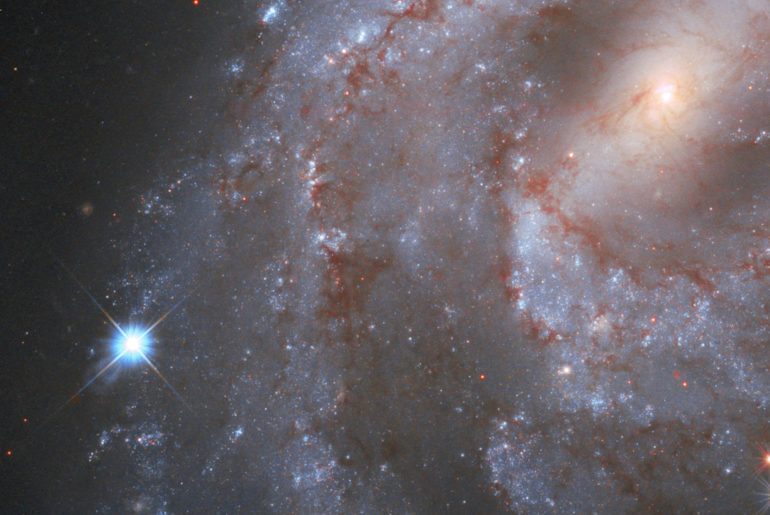
Photo credit: NASA, ESA, and A. Riess (STScI/JHU) and the SH0ES team; acknowledgment: M. Zamani (ESA/Hubble)
NASA’s Hubble Space Telescope captured an incredible photo of a fading supernova, or in scientific terms, the self-detonation of a star. What you’re looking at is the spiral galaxy NGC 2525, located 70 million light-years away. The time-lapse sequence that you’re about to see spans nearly a year, and the supernova first appears as a blazing star located on the galaxy’s outer edge, outshining the brightest stars in the galaxy before fading out of sight.
This type of supernova originated from a white dwarf located in a close binary system that is gradually accumulating material from its companion star. When the white dwarf reaches a critical mass, its core becomes hot enough to ignite nuclear fusion, turning it into a ticking time bomb, tearing the star apart.
- BRIGHT, SHARP VIEWS ANYWHERE: Unlike many beginner telescopes, this quality refractor features fully coated glass lenses and a 70mm aperture for...
- PERFECT FIRST TELESCOPE FOR BEGINNERS: Designed for adults and kids to enjoy together, this beginner-friendly telescope sets up in minutes and...
- EASY NO-TOOL SETUP: No complicated assembly or tools needed. The full-height tripod and telescope tube set up in seconds and pack neatly into the...
No Earthly fireworks display can compete with this supernova, captured in its fading glory by the Hubble Space Telescope,” said Nobel laureate Adam Riess, of the Space Telescope Science Institute (STScI) and Johns Hopkins University in Baltimore, leader of the High-z Supernova Search Team and the Supernovae H0 for the Equation of State (SH0ES) Team to measure the universe’s expansion rate.





